
Asura is a genus of moths in the subfamily Arctiinae erected by Francis Walker in 1854.
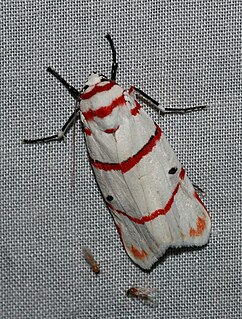
Cyana is a genus of moths in the family Erebidae. Species are well distributed in Africa, Madagascar, China, India, Sri Lanka, Myanmar, Sumatra, Java and Borneo. The genus was erected by Francis Walker in 1854.
Cyme is a genus of moths in the family Erebidae. The genus was described by Felder in 1861.
Epimolis is a genus of moths in the family Erebidae. The genus was erected by Harrison Gray Dyar Jr. in 1913.
Eriomastyx is a genus of moths in the family Erebidae. The genus was erected by Rothschild and Jordan in 1905.

Loxophlebia is a genus of moths in the subfamily Arctiinae. The genus was erected by Arthur Gardiner Butler in 1876.

Macaduma is a genus of moths in the subfamily Arctiinae.
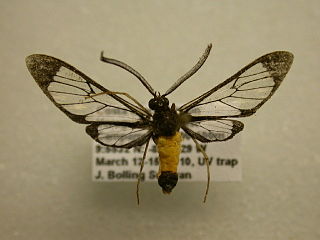
Mesothen is a genus of moths in the subfamily Arctiinae. The genus was erected by George Hampson in 1898.
Nodozana is a genus of moths in the subfamily Arctiinae erected by Herbert Druce in 1899.
Paracles is a genus of moths in the subfamily Arctiinae. The genus was described by Francis Walker in 1855. The species range from Panama to Patagonia, with quite a few in the southern temperate region of South America.
Zygaenosia is a genus of moths in the family Erebidae. The genus was erected by George Hampson in 1900.
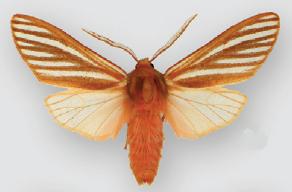
Pseudohemihyalea is a genus of moths in the family Erebidae described by Régo Barros in 1956. While the caterpillars of most species of Pseudohemihyalea feed on broad-leaved trees, the P. ambigua group has larvae that feed on conifers. Their forewing coloration has accordingly evolved to light-and-dark lengthwise striping, giving better camouflage among the slim needles of the host plants. In this, they seem to be convergent to certain geometer moths, such as Caripeta piniata or Sabulodes niveostriata.

Pseudosphex is a genus of tiger moths in the family Erebidae. The genus was erected by Jacob Hübner in 1818. These moths are mimics of a variety of Hymenoptera. The prefix pseudo means "false", and Sphex is a genus of wasps.
Schalotomis is a monotypic moth genus in the family Erebidae erected by George Hampson in 1920. Its only species, Schalotomis roseothorax, was first described by Walter Rothschild in 1913. It is found in Peru.
Schistophleps is a genus of moths in the family Erebidae first described by George Hampson in 1891.
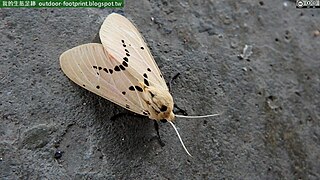
Spilarctia is a genus of moths in the family Erebidae. The genus was erected by Arthur Gardiner Butler in 1875.
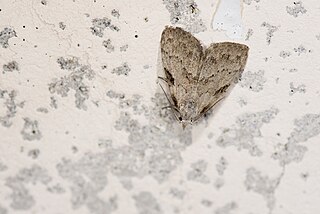
Manoba is a genus of moths in the family Nolidae. The genus was first described by Francis Walker in 1863.

Eoophyla is a genus of moths of the family Crambidae. It was erected by Charles Swinhoe in 1900.

Dasychira is a genus of tussock moths in the family Erebidae described by Jacob Hübner in 1809. They are well distributed all over Africa, Europe, Madagascar, Japan, China, India, Sri Lanka, Myanmar, Java and Australia.

Aglossa is a genus of small moths belonging to the family Pyralidae. It was described by Pierre André Latreille in 1796. They are found mainly in western Eurasia, though some species have been introduced elsewhere.










